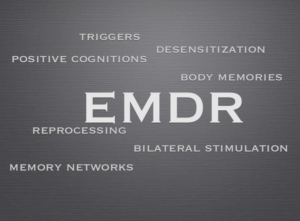About EMDR, Eye Movement Desensitization and Reprocessing
What is EMDR?
EMRD, or Eye Movement Desensitization and Reprocessing, is a therapeutic technique which uses the mind and body’s natural ability to treat stress, anxiety, trauma, and a wide range of mental health problems.
When a distressing and disturbing experience occurs, it could overwhelm our natural abilities to cope. These experiences are then inadequately processed by the brain and body. These experiences/memories are then stored in an isolated manner.
EMDR activates the brains’ natural information processing capabilities to reduce long-lasting effects of these disturbing experiences. The brain and bodys’ natural healing mechanism is most evident during sleep, particularly during rapid eye movement (REM) sleep. EMDR deliberately mimicking the eye-movements that happen during REM sleep, thus ‘activating’ this natural capability to process emotional experiences very rapidly and to resolution.
What happens during an EMDR session?
EMDR ‘targets’ distressing event and/or experience. Eye movements, similar to those during REM sleep, will be recreated. This may be done is a number of fashions. These eye movements last from 15 seconds to a couple of minutes. During each set of eye movements, changes in thinking, images, feelings and emotional charge may be altered in relation to the distressing experience.
The eye-movements are then repeated. The repetitive sets of eye movements continue to activate the healing process. The result may be that the event/memory/emotional experience changes in such a way that it loses its painful intensity and simply becomes neutral.
Is EMDR like hypnosis?
No. During EMDR folks are not hypnotized or in any type of a trance. Quite the contrary. People are fully conscious, aware and awake throughout the process.
What happens when you are traumatized?
Most of the time your body routinely manages new information and experiences without you being aware of it. However, when something out of the ordinary occurs and you are traumatized by an overwhelming event (e.g. a car accident) or by being repeatedly subjected to distress (e.g. childhood neglect), your natural coping mechanism can become overloaded. This overloading can result in disturbing experiences remaining frozen in your brain or being “unprocessed”.
Often long-time memories themselves are forgotten, but the distressing emotions and feelings like anxiety, panic, anger or despair, continue to be triggered in the present. This inhibits our ability to live in the present and learn from new experiences.


This Post Has 0 Comments